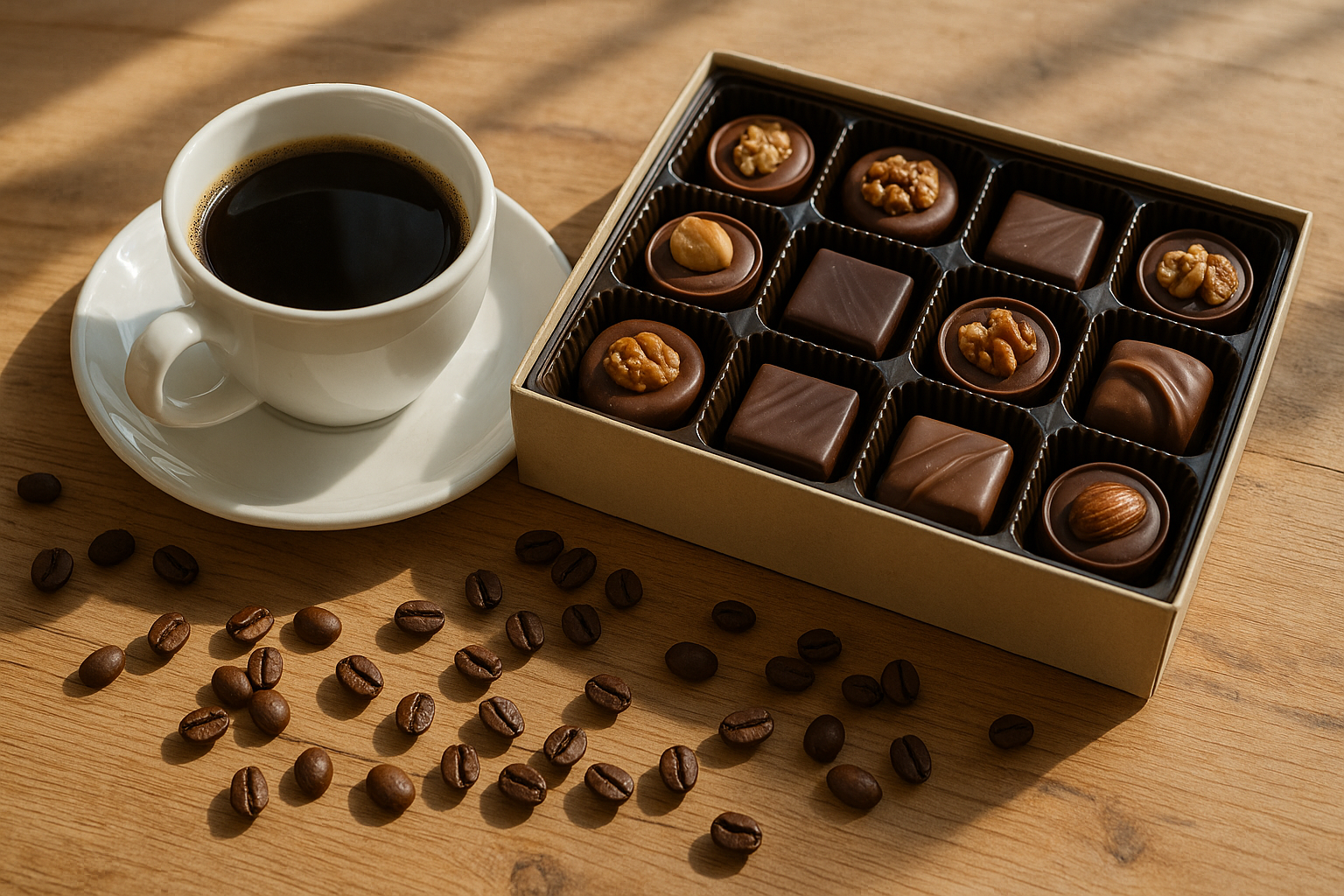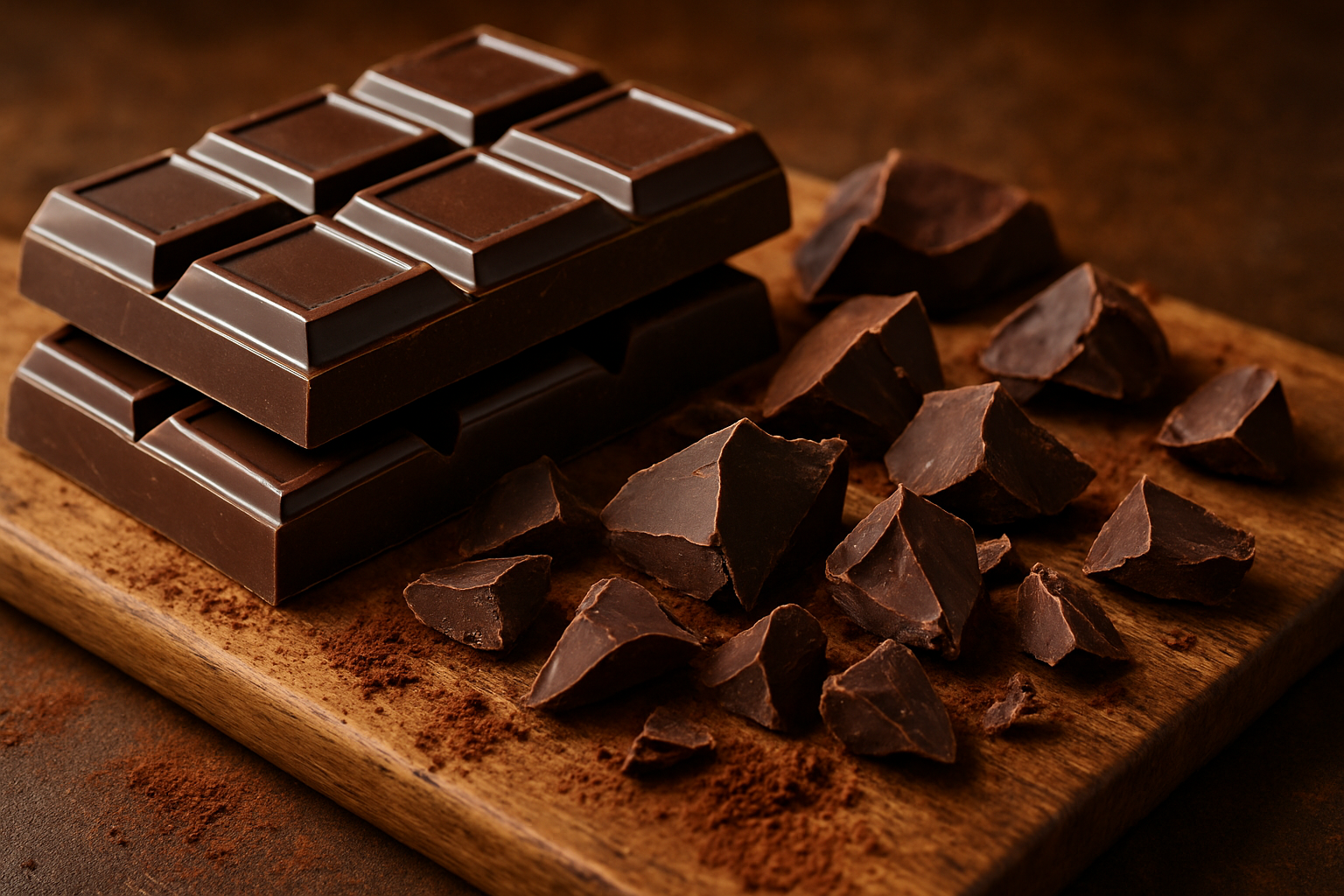Chocolate. For many, it's a simple pleasure – a sweet treat, a comfort food, an everyday indulgence. We grab a bar, tear open the wrapper, and munch away, often while distracted by other things. But have you ever stopped to truly taste chocolate? We think you owe it to yourself to learn how to taste chocolate like a connoisseur. To explore the intricate tapestry of flavours, aromas, and textures hidden within a single square? Knowing how to taste chocolate like a connoisseur isn't about snobbery; it's about deepening your appreciation for one of nature's most complex and fascinating foods, derived from the humble cacao bean.
Much like wine, coffee, or cheese, fine chocolate offers a world of sensory discovery. The journey from bean to bar involves numerous steps – fermentation, drying, roasting, grinding, conching – each influencing the final product's character. Learning how to taste chocolate unlocks this hidden complexity, transforming a simple snack into a rich experience. Ready to embark on this delicious journey?
Here’s how to taste chocolate like a connoisseur.
Get ready to follow our chocolate tasting guide.
1. Preparation: Setting the Stage
Before you even unwrap the bar, a little preparation will give you a head start on how to taste chocolate.
-
Choose Your Chocolate: Start with quality. Look for bars with clear information about cacao percentage and potentially origin (single-origin bars are excellent for tasting distinct profiles). It's often easier to discern nuances in dark chocolate (70% cacao or higher) initially, as they typically have less sugar and more pronounced cacao flavours. Consider selecting two or three different bars to compare.
-
Find the Right Environment: Choose a quiet space free from strong competing odours (like perfume, cooking smells, or coffee). Good, natural lighting is helpful for assessing appearance.
-
Cleanse Your Palate: Ensure your palate is neutral. Avoid strong-flavoured foods or drinks like coffee, mint, or spicy meals for at least an hour beforehand. Have room-temperature water (still, not sparkling) and perhaps some plain, unsalted crackers or a piece of plain bread on hand to cleanse your palate between samples.
-
Temperature Matters: Chocolate tastes best at room temperature, ideally between 18-22°C (65-72°F). If it's too cold, aromas and flavours will be muted. If it's too warm, the texture might be too soft. Let refrigerated chocolate sit out for a while before tasting.
2. Engage All Your Senses: The Tasting Process
Chocolate tasting like a connoisseur involves more than just your taste buds. It’s a full sensory evaluation. Hopefully our chocolate tasting guide will give you some great pointers.
-
Sight (Appearance): Unwrap the chocolate carefully. Examine its surface. Is it glossy and smooth? A good sheen indicates the chocolate was well-tempered (a heating and cooling process that stabilises cocoa butter crystals), which affects texture and melt. Note the colour – fine dark chocolates can range from deep reddish-brown to nearly black. Are there any imperfections like streaks, spots, or a dull, chalky appearance (this might be "bloom," caused by temperature fluctuations, which affects texture more than flavour)?
-
Touch (Texture): Hold a piece between your fingers. Does it feel smooth, slightly rough, or waxy? Does it begin to melt slightly from your body heat? This indicates a good amount of cocoa butter.
-
Sound (The Snap): Hold a piece near your ear and break it. A well-tempered dark chocolate bar should produce a sharp, crisp "snap." Milk and white chocolates, having more sugar and milk solids, will have a softer, quieter break. A dull thud in dark chocolate might suggest poor tempering or higher moisture content.
-
Smell (Aroma): Before tasting, bring the chocolate close to your nose and inhale deeply. What do you smell? Note the initial impressions. Then, break the piece in half again or rub it gently between your fingers to warm it slightly and release more volatile aromatic compounds. Inhale again. Aromas can range widely: earthy, nutty, fruity (berries, citrus), floral, spicy, caramel, roasted, even tobacco or leather notes can be present in complex chocolates.
-
Taste (Flavour and Mouthfeel): This is at the heart of how to taste chocolate
-
Take a Small Piece: Place a small square (about the size of a postage stamp) in your mouth.
-
Resist Chewing (at first): Let the chocolate melt slowly on your tongue. Your body heat will gently release its flavours and aromas. Pay attention to how it feels as it melts – this is the mouthfeel. Is it smooth, creamy, buttery, grainy, gritty, or chalky? Does it coat your mouth thickly or feel thin?
-
Introduce Air: As it melts, purse your lips slightly and draw some air gently over the chocolate in your mouth (like tasting wine). This helps carry volatile aromatic compounds to your olfactory receptors at the back of your nasal passage, significantly enhancing flavour perception.
-
Identify Flavours: What tastes do you notice first? How do they evolve? Fine chocolate often has a flavour journey – starting one way, developing complexity in the middle, and leaving a lasting impression. Try to identify specific notes. Is it bitter, sweet, acidic? Does it remind you of fruits, nuts, spices, coffee, caramel?
-
The Finish: After you swallow (or politely spit, if tasting many samples), notice the lingering flavours and sensations – the finish or aftertaste. Is it pleasant, harsh, long, short? Do new notes emerge?
-
3. Develop Your Vocabulary and Palate
Describing what you sense is key. Don't worry about being "right" – taste is subjective. However, building a vocabulary helps articulate your experience. Who knows, you may write your own, ‘How to taste chocolate’ guide one day!
-
Use Analogies: Does it remind you of cherries? Toasted almonds? Fresh soil? Honey? Coffee?
-
Think in Categories: Common flavour profiles include Fruity, Floral, Nutty, Spicy, Earthy, Caramel/Sweet, Roasted.
-
Consider Intensity and Balance: Was the flavour intense or subtle? Were the different elements (sweetness, bitterness, acidity, aroma) well-balanced?
-
Keep Notes: Consider keeping a tasting journal. Record the chocolate's details (maker, origin, percentage), your sensory observations (appearance, snap, aroma, flavour notes, mouthfeel, finish), and your overall impression. This helps track your preferences and notice patterns.
4. Understand the Context
Knowing a little about the chocolate adds another layer of appreciation for chocolate tasting like a connoisseur.
-
Origin: Cacao beans, like grapes for wine, have terroir. Beans from Madagascar might be known for bright, fruity notes, while those from Ecuador might be more floral or earthy.
-
Cacao Percentage: This indicates the total amount of ingredients derived from the cacao bean (cocoa solids and cocoa butter). Higher percentages generally mean less sugar and more intense, potentially bitter, chocolate flavour.
-
Bean Type: Criollo, Forastero, and Trinitario are the main types, each with general characteristics, though growing conditions and processing play huge roles.
-
Maker's Style: Different chocolate makers have distinct roasting profiles and conching techniques that shape the final flavour and texture.
-
Friars for Superior Chocolates
-
Having made your major preparations for learning how to taste chocolate like a connoisseur, it’s time to consider the ‘lucky’ chocolates to be tasted. Look no further than Friars, where you will find a great range of delicious chocolates to help begin your journey.
-
To really put your new found skills to the test, where better to start than with a Chocolatier’s platter. Immerse yourself in the ultimate chocolate indulgence with the Chocolatier's Platter, a stunning large chocolate box curated by our master Chocolatier. Each piece is a testament to artistry and flavour, blending the finest ingredients with unparalleled craftsmanship. This exquisite assortment features a variety of decadent and irresistible creations, hand-selected to captivate every chocolate lover's palate.

-
Ice Cream Chocolate Selection/Luxe Box
With a fantastic twist on traditional chocolates, our Ice Cream selection are great at any time. Perhaps a wonderfully summer sort of way to test your new tasting skills.
Long, light evenings are ideal for moments of leisure, much like our limited edition ice cream inspired chocolates. Treat yourself or a loved one to our exquisite selection of creamy, ice cream-flavoured chocolates. Enjoy the mouthwatering flavours of strawberry, raspberry ripple, chocolate, banana split, and caramel fudge. Act quickly—once they're gone, they're gone!

-
Kakoa Iconic Collection Vegan/24 Chocolate Box
Great tastes are not exclusive to dairy based chocolate products. Indeed Kakoa are front runners in vegan artistry and have fabulous chocolates to test out your taste buds. No finer example than our iconic vegan collection.
Kakoa iconic collection is a dazzling mix of award winning milk, white and dark vegan chocolates from up and coming plant based brand Kakoa. Made with rice and oat milk as an alternative to dairy, there is no compromise when it comes to flavour. Enjoy the legendary sea salted caramel chocolate with its gooey centre or the ultimate peanut butter truffle, finished with salted peanut flakes for that extra nutty hit.
All the flavour of this delicious premium vegan chocolate are free from dairy, the perfect luxury gift for those with a dairy intolerance or for those following a vegan diet.

5. Practice and Explore
The best way to enjoy chocolate tasting like a connoisseur is simply to taste!
-
Taste Comparatively: Tasting two or three chocolates side-by-side is one of the best ways to highlight differences. Try bars with the same percentage but different origins, or the same origin but different makers.
-
Be Curious: Try different types – dark, milk, white (yes, quality white chocolate made with deodorized cocoa butter can be complex!), single-origin, blends, inclusions.
-
Enjoy the Journey: Remember, the goal is enhanced enjoyment and appreciation, not passing a test. It’s about discovering the incredible diversity and depth that chocolate offers.
By slowing down and engaging your senses, you transform eating chocolate from a passive act into an active exploration. You begin to understand the craft behind the bar and appreciate the remarkable journey from a tropical bean to the complex delight melting on your tongue. Using this chocolate tasting guide will go a long way to enhancing your chocolate passion. So, next time you reach for a piece of chocolate, take a moment. Look, snap, smell, and truly taste. You might just discover a whole new world within that familiar treat.







